Rothschildia aurota
This moth doesn't have a common name in English. It flies in the Amazon basin. There are several Mexican Rothschildia species used for silk thread, and I'm hoping that this one will make a useful cocoon. These caterpillars are being reared on privet, Ligustrum ovalifolium.
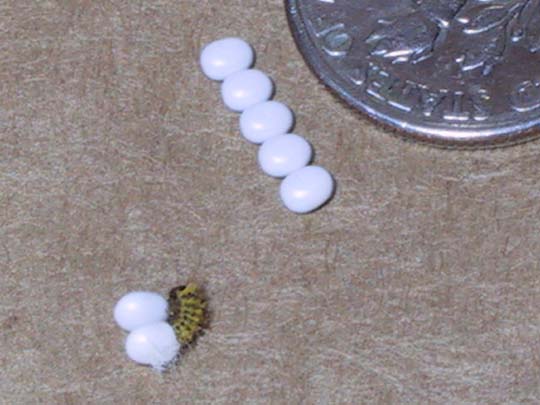
These eggs remind me of the eggs of the calleta moth - perfect, smooth and shiny white. They're a little larger. The caterpillars began hatching on June 8, 2004.
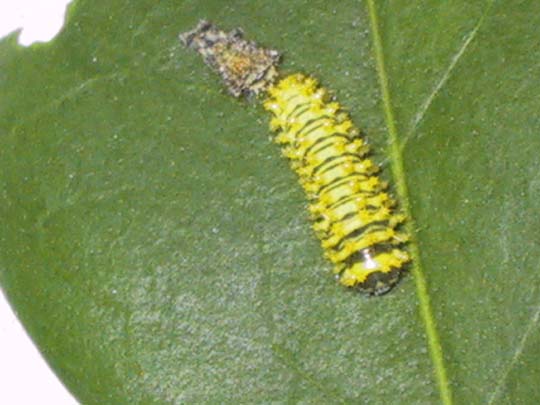
The caterpillars have begun shifting into the second instar. June 17, 2004.
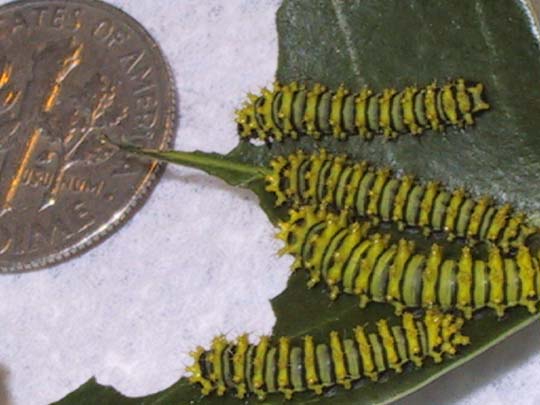
The second-instar caterpillars have this strong striped pattern. They tend to cluster in groups, eating their way down the leaves in a neat row. June 17, 2004.
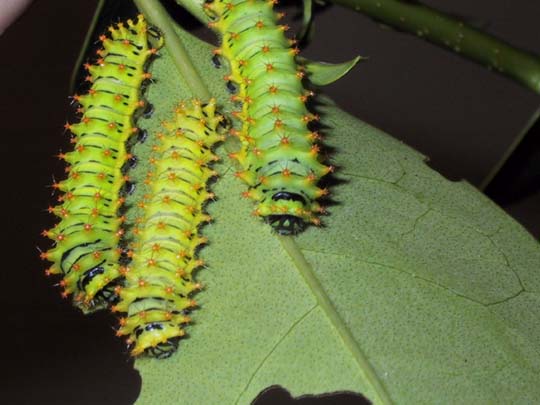
The caterpillars are in the third instar now; they have lost their stripes, and gained bright orange tubercules. June 27, 2004.
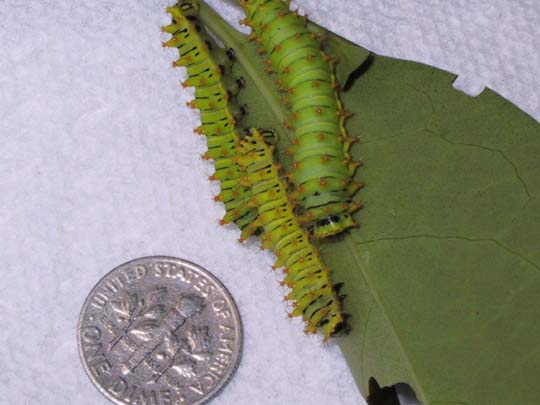
The caterpillars are fairly husky; they are still clustering together in small groups, although they are not nearly as cohesive as they were in the first and second instars. June 27, 2004.
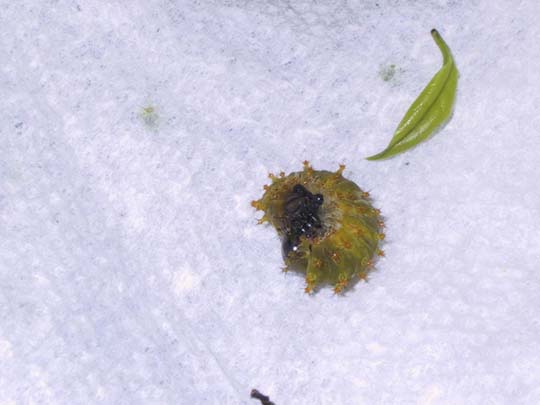
Around the first of July, these caterpillars started dropping, one by one. They curled up on the floor of their tub, and liquid leaked out of either end of them. One of the things that I was told to expect with raising moths, is that occasionally an entire brood will die of some mysterious disease, despite you doing everything right - clean container, even temperature, fresh food. This was my first dead brood. RIP, little caterpillars.